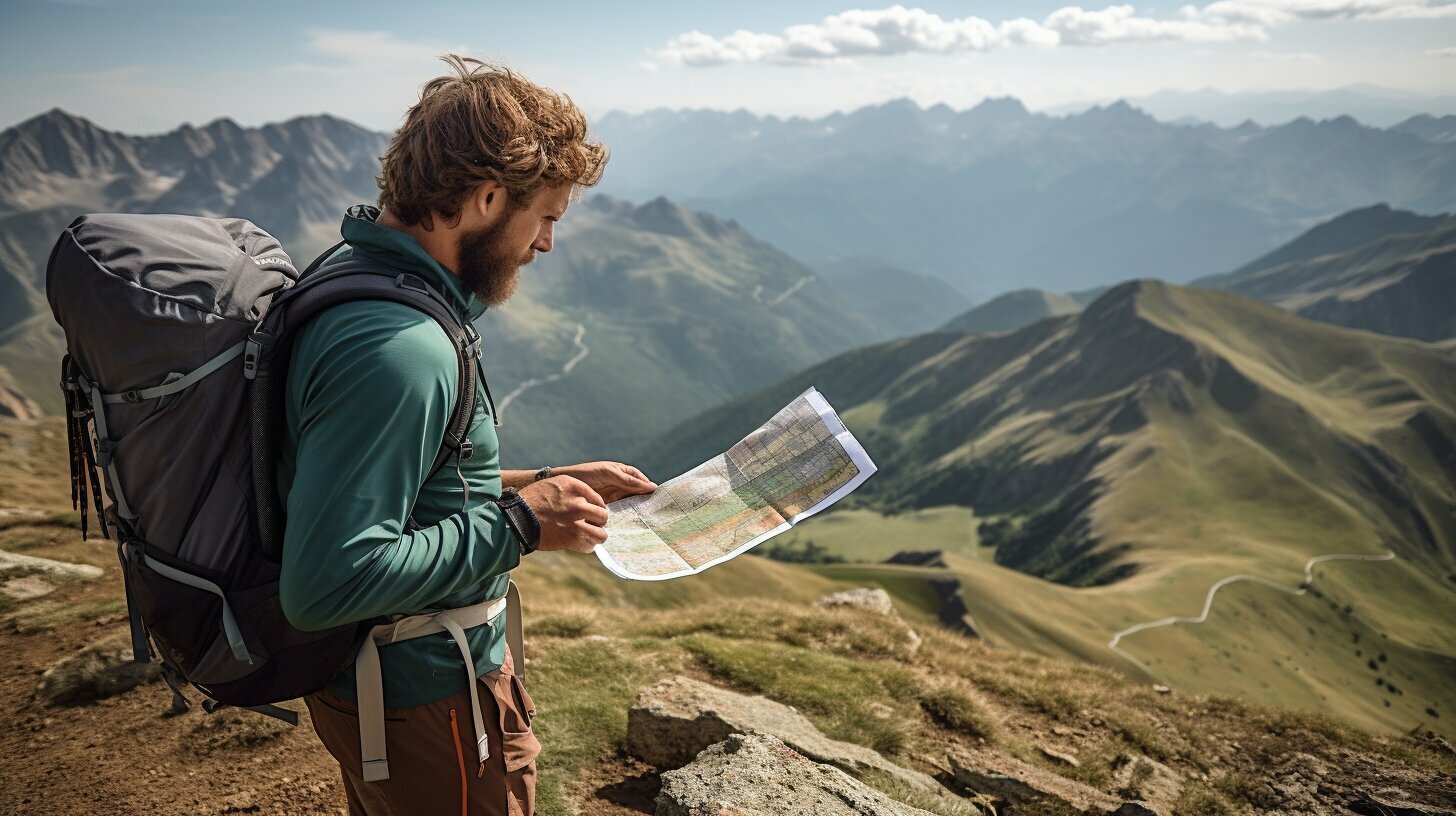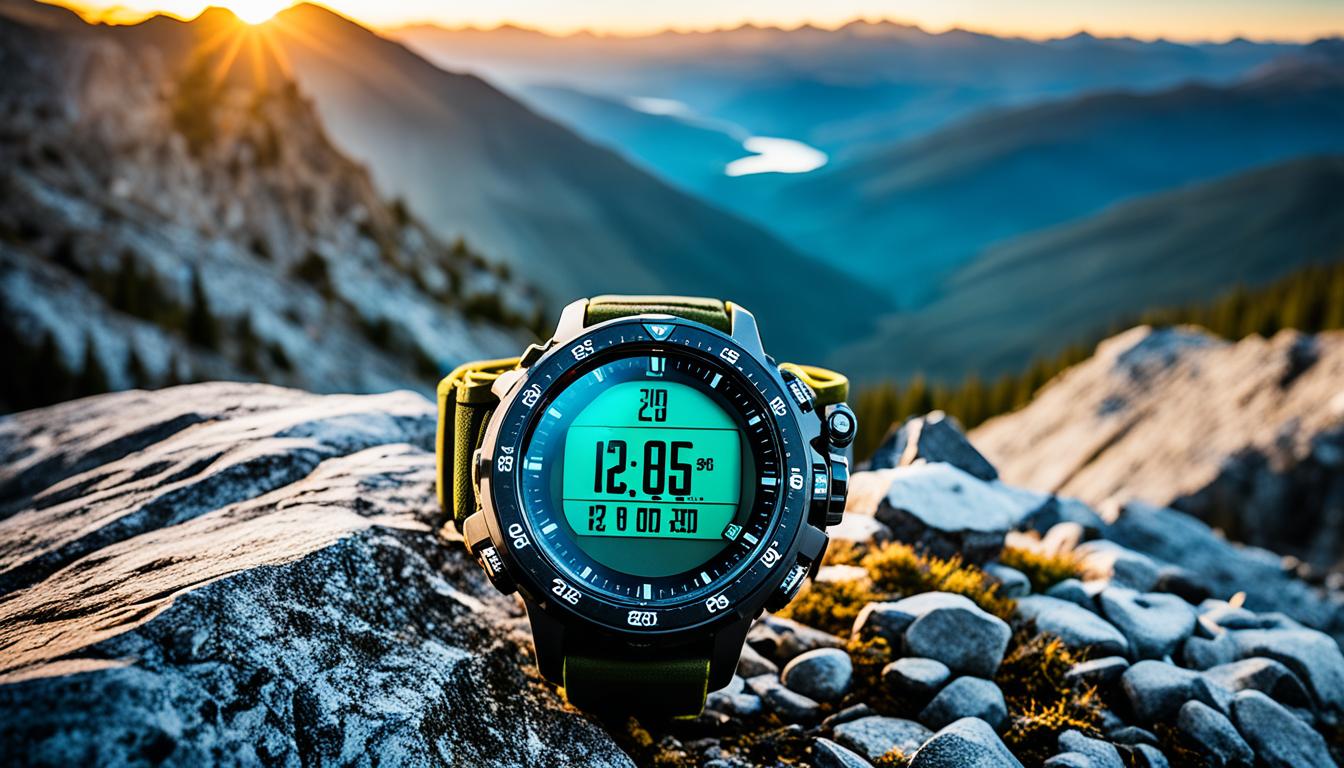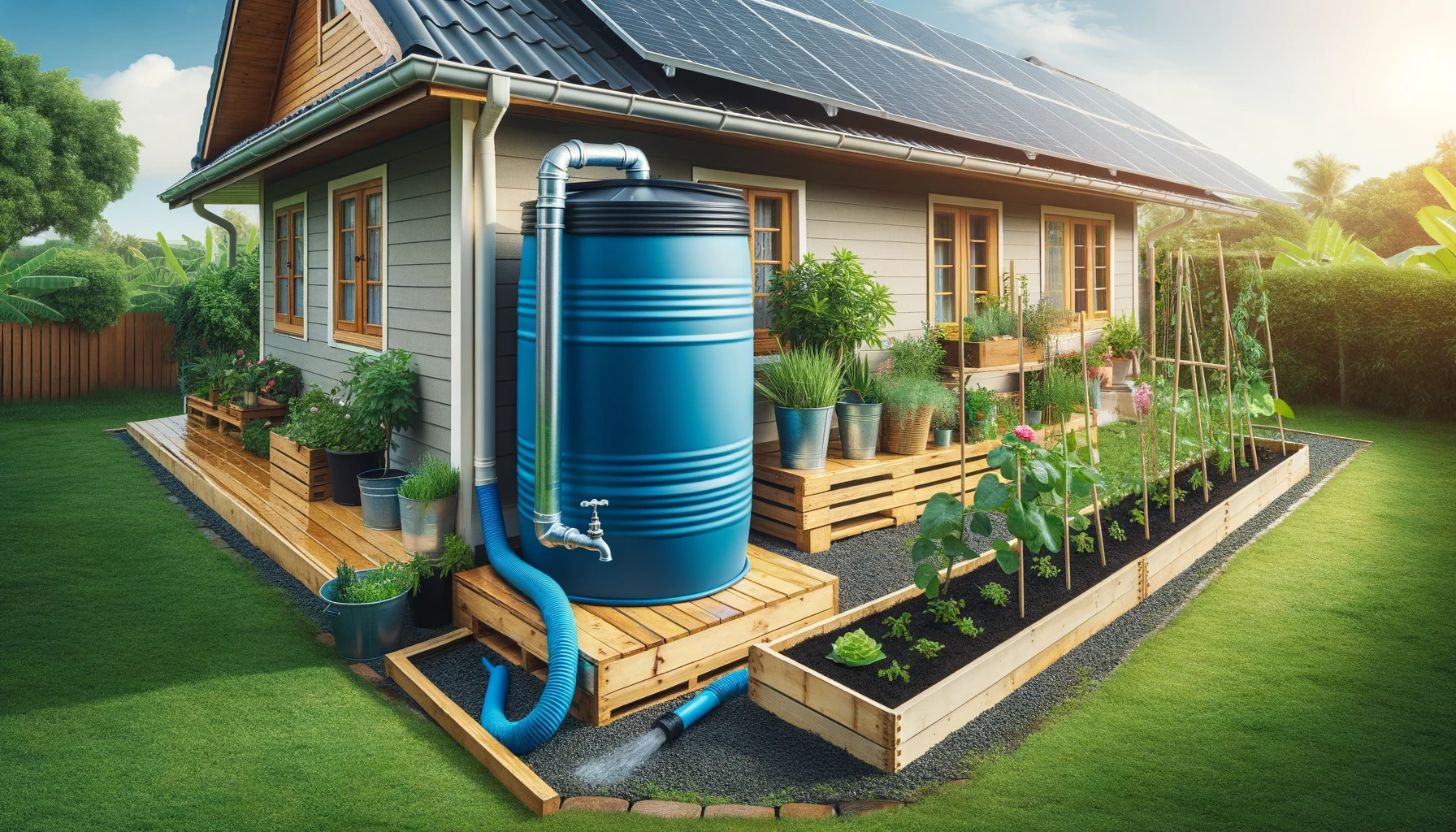As an avid outdoor enthusiast, you know that nature can be unpredictable and sometimes unforgiving. Whether you’re hiking in the mountains, exploring a dense forest, or kayaking along a coastline, having essential navigation skills is crucial to ensuring a safe and enjoyable experience. By mastering these skills, you can confidently navigate any terrain and make the most of your wilderness journeys.
Key Takeaways
- Navigation skills are essential for safe and enjoyable outdoor experiences.
- Mastering navigation skills can enhance your wilderness journeys and allow you to navigate any terrain fearlessly.
Understanding Outdoor Navigation Basics
As an outdoor enthusiast, it is essential to have a solid grasp of navigation techniques to ensure a safe and enjoyable wilderness experience. Understanding the fundamentals of outdoor navigation can help you navigate through challenging terrain and avoid getting lost. Here are some outdoor navigation tips and wilderness navigation techniques that every outdoor enthusiast should know:
Maps
Maps are one of the essential tools for outdoor navigation. They provide a visual representation of the surrounding area, enabling you to identify key features, such as water sources, trails, and landmarks. Topographic maps are the most common type of map used for outdoor navigation and can help you determine the elevation, slope, and contour of the terrain. Make sure to carry a physical map in your backpack, as digital devices such as GPS devices, smartphones, or compasses that require power, can fail or malfunction.
Disclosure: When you buy through links on our site, we may earn an affiliate commission.
Compasses
Using a compass in conjunction with a map can help you determine your location and navigate in the right direction. A compass can help you orient your map to true north and determine direction of travel. It can also help you identify landmarks and find your way back to your starting point. Ensure you know how to use your compass before setting out on any expedition.
GPS Devices
Global Positioning System (GPS) devices are popular navigation tools for outdoor enthusiasts. They use satellite technology to display your precise location on a digital map. GPS devices can also help you create and follow predetermined routes, track your progress, and mark waypoints for future reference. However, it is important to carry backup navigation tools and map as GPS devices can malfunction in areas with poor satellite coverage, their batteries can run out, or the device itself can be damaged.
Orienteering
Orienteering is a sport that involves navigating through challenging terrain using only a map and compass. It can help you develop and improve your navigation skills. Orienteering also helps build confidence in your ability to navigate unfamiliar terrain.
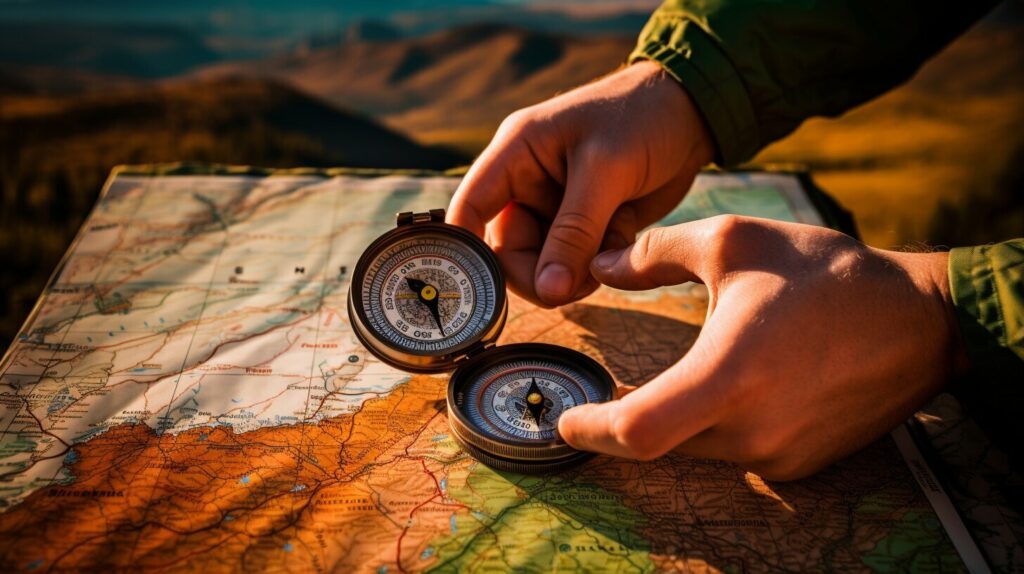
By mastering these essential navigation skills and techniques, you can plan and execute successful outdoor expeditions with confidence.
Mastering Map Reading Skills
Map reading is an essential skill for anyone who spends time in the great outdoors. Understanding how to read a map can help you navigate any terrain with confidence and accuracy. With a little practice, you can master the art of map reading and become an expert in outdoor navigation.
To begin, you should start by familiarizing yourself with the different types of maps available. Topographic maps are the most commonly used maps in outdoor recreation. These maps show the contours of the land and include important features such as mountains, rivers, and trails. Understanding how to interpret topographic maps is the first step in mastering map reading skills.
When reading a map, it’s important to understand how to identify and interpret contour lines. These lines represent the elevation of the land and can help you determine whether you are hiking uphill or downhill. By paying attention to the contour lines, you can also identify areas of steep terrain and plan your route accordingly.
Another important aspect of map reading is knowing how to use a compass in conjunction with a map. A compass can help you determine your orientation to the map and can also be used to take bearings and navigate through challenging terrain. By mastering these outdoor map and compass skills, you can navigate with confidence in any environment.
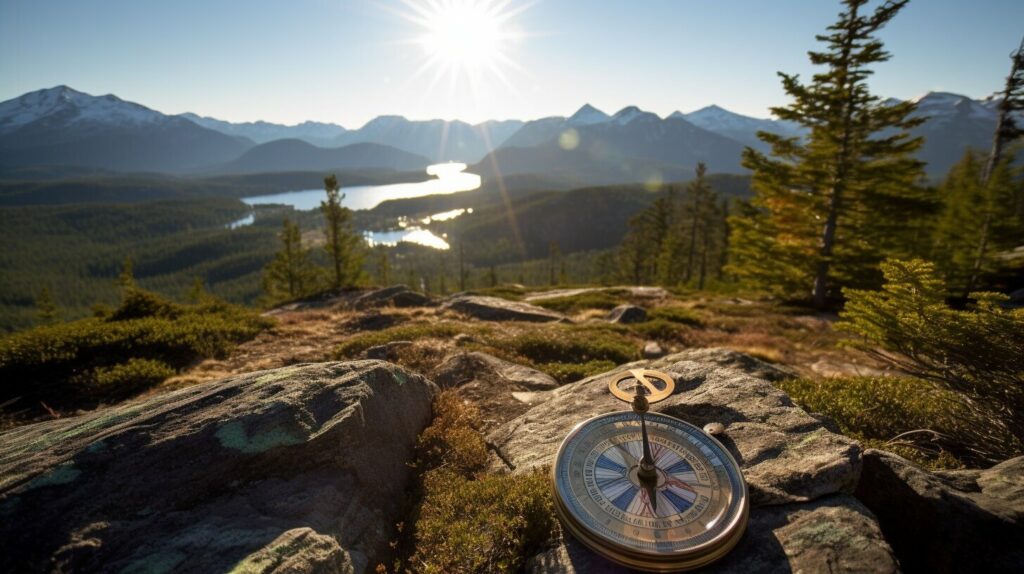
Navigating with a Compass
Compass navigation is an essential skill for hikers and outdoor enthusiasts. It allows you to navigate accurately in any terrain and is especially useful in areas without cellphone coverage or when electronic navigation devices fail.
The first step in compass navigation is orienting your map to match the terrain. To do this, place the compass on the map and turn both until the compass needle is aligned with the north-south grid lines on the map.
Next, take a bearing by pointing the direction of travel arrow on the compass towards your target location and rotating the compass housing until the orienting arrow aligns with north on the compass housing. The number on the compass housing will indicate the bearing.
To follow your bearing, hold the compass flat and rotate your body until the magnetic needle aligns with the orienting arrow. The direction of travel arrow should be pointing towards your target location.
It’s important to remember to adjust your bearing for declination, which is the difference between true north and magnetic north. Your map should indicate the declination for your location, and you can adjust your bearing by adding or subtracting the declination angle from your bearing.
When navigating in challenging terrain, such as steep slopes or dense forests, it’s important to take frequent readings and adjust your bearing as needed. It’s also a good idea to have a backup compass and to practice using your compass in different conditions to build your skills.

Remember, a compass is just one tool in your navigation arsenal. It’s important to also carry a map and other navigation tools, and to practice using all of them together to build your skills.
Utilizing GPS Navigation for Outdoor Activities
When it comes to outdoor navigation tools, GPS devices have revolutionized the way we explore the wilderness. With the ability to track your location, plan routes, and navigate with precision, GPS technology has become a must-have for outdoor enthusiasts.
Using a GPS device for outdoor navigation requires some basic understanding. To get started, you’ll need to learn how to enter waypoints, create routes, and save your tracks. Most GPS devices come with manuals that explain these functions in detail. Additionally, there are many online resources and guides available to help you master GPS navigation.
When using a GPS device for outdoor activities, it’s crucial to have backup navigation tools. Batteries can die, signals can be lost, and devices can malfunction. Always carry a map and compass as a backup, and make sure you know how to use them.
One of the biggest benefits of using a GPS device for outdoor navigation is the ability to plan routes and track progress. With a GPS device, you can create and save routes before heading out, so you have a clear plan of where you’re going and how to get there. Additionally, you can track your progress as you hike, ensuring you’re staying on course and making good time.
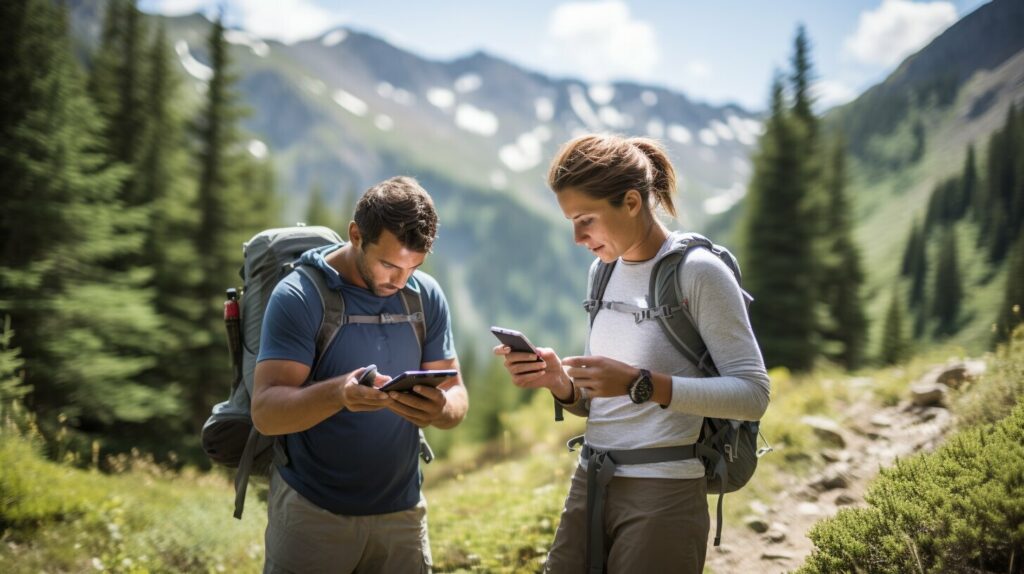
There are many GPS devices available on the market, ranging from basic models to high-end units with advanced features. Consider your needs and budget when selecting a GPS device for outdoor activities. Some popular brands include Garmin, Magellan, and TomTom.
With practice, using a GPS device for outdoor navigation can become second nature. However, it’s important to not rely solely on technology and to always be prepared with backup navigation tools. By mastering GPS navigation and carrying essential gear, you can confidently explore the great outdoors and make the most of your wilderness adventures.
Introduction to Orienteering Basics
Are you ready to take your outdoor navigation skills to the next level? Orienteering is a sport that can improve your map reading, route planning, and navigation skills. It is also a fun way to challenge yourself and explore new terrain. In this section, we will introduce you to the basics of orienteering.
Orienteering relies on outdoor navigation tools such as maps, compasses, and GPS devices. The sport involves using these tools to navigate through a series of checkpoints, also known as “controls,” located throughout a wilderness course. Orienteering courses can vary in length and difficulty, but they all require careful navigation and route planning.
When participating in orienteering, it’s essential to develop your map reading skills. You’ll need to interpret topographic maps, understand contour lines, and identify key features such as trails, water sources, and prominent landmarks. You’ll also need to plan your route carefully to avoid obstacles and minimize distance traveled.
Using a compass in conjunction with a map is also crucial during orienteering. You’ll need to orient the map to match the terrain, take bearings to locate your position and the location of controls, and follow a compass heading to reach your destination. Depending on the course’s difficulty, you may need to navigate through challenging terrain, such as thick forests or rocky mountainsides.
Participating in orienteering events is an excellent way to practice your navigation skills in a competitive environment. You’ll have the opportunity to race against other participants and push your limits while navigating through a wilderness course. There are many orienteering clubs and events held throughout the United States. Check out the Orienteering USA website for more information on upcoming events and clubs in your area.
By mastering orienteering basics, you’ll improve your navigation skills and gain confidence in outdoor navigation. You’ll also have the opportunity to challenge yourself and explore new terrain. Keep practicing your navigation skills and pushing yourself to new limits.

Enhancing Navigation Skills through Practice
To truly master essential navigation skills for outdoor enthusiasts, you must commit to regular practice. The more you practice, the more confident you’ll become in your ability to navigate any terrain with ease. Here are some suggestions for practicing your navigation skills:
- Take day hikes with your map and compass to familiarize yourself with the surrounding landscape. Try navigating to specific points on the map and compare them to what you see in real life. This will help you develop your map reading and compass skills.
- Use GPS devices to plan routes and track your progress. Familiarize yourself with the different features and functions of your device, such as setting waypoints and navigating to them. Always bring a paper map and compass as a backup in case your GPS fails.
- Participate in orienteering courses or join a navigation club. This will give you the opportunity to navigate through challenging terrain and learn from experienced navigators.
Remember, practice makes perfect! The more you practice your navigation skills, the more confident you’ll become in your ability to navigate any terrain. Don’t be afraid to challenge yourself and try new things.
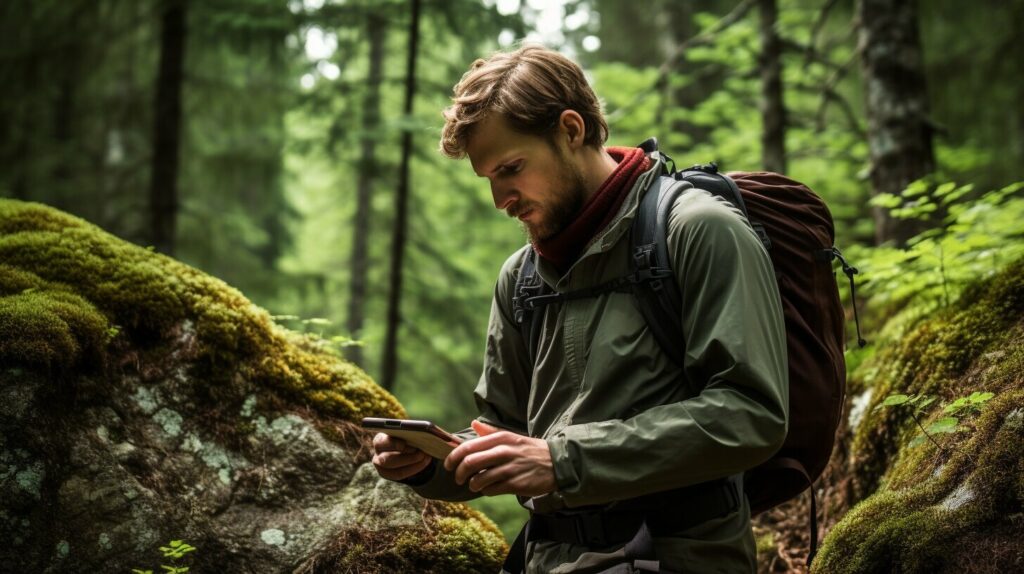
Choosing the Right Navigation Tools and Equipment
When it comes to outdoor navigation, having the right tools and equipment can make all the difference. Whether you’re using a compass, GPS device, or map and compass, it’s important to select high-quality, reliable equipment that meets your needs and level of expertise.
Compass Navigation for Hikers
If you’re planning on using a compass for navigation, consider investing in a high-quality, durable model that is designed for hiking and outdoor use. Look for compasses with adjustable declination, sighting mirrors, and clinometers. These features will allow you to take bearings more accurately and easily, and to navigate in challenging terrain.
GPS Navigation for Outdoor Activities
For those who prefer GPS navigation, there are a variety of devices and smartphone apps available to choose from. When selecting a GPS device, consider features such as battery life, accuracy, and ease of use. Smartphone apps can be a convenient and cost-effective alternative to traditional GPS devices, but it’s important to have backup navigation methods in case of battery failure or loss of signal.
Outdoor Navigation Tools
Other essential navigation tools for outdoor enthusiasts include maps, map cases, and compasses. Look for maps that are up-to-date, waterproof, and durable enough to withstand the rigors of outdoor use. A map case can protect your map from damage and keep it easily accessible during your journey. Additionally, consider investing in a high-quality multi-tool, headlamp, and first-aid kit for added safety and preparedness.
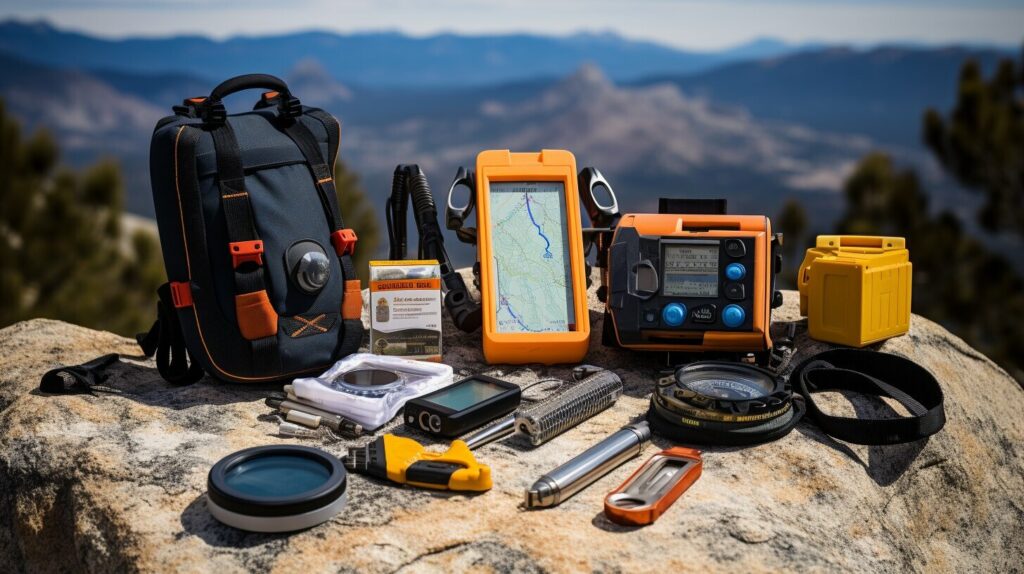
Remember to properly maintain and care for your navigation tools and equipment to ensure their reliability in the field. Clean and store your compass, map, and GPS device properly after each use. And be sure to carry backup navigation tools and batteries when relying on electronic devices in the wilderness.
Safety Considerations for Outdoor Navigation
When it comes to outdoor navigation, safety should always be a top priority. Being prepared and knowledgeable about potential hazards and emergency procedures can make all the difference in an unexpected situation. Here are essential safety considerations to keep in mind:
- Before embarking on any outdoor journey, check weather conditions, trail maps, and current information about the area.
- Inform someone of your whereabouts and expected return time.
- Carry a map and compass, and know how to use them.
- Bring extra food, water, and clothing in case of unforeseen circumstances.
- Understand potential risks in the environment, such as wildlife, natural hazards, and difficult terrain.
- Be prepared for emergencies by carrying a first aid kit, signaling devices, and a charged cell phone or emergency radio.
- In low-visibility conditions, such as fog or darkness, navigate with extra caution or consider postponing the journey.
- Have backup navigation methods and equipment, such as carrying spare batteries or a backup GPS device.
Remember, even with the most advanced navigation tools and skills, unexpected situations can arise in the wilderness. Being prepared and knowledgeable about safety considerations can help ensure a safe and successful outdoor adventure.

Navigating in Specific Environments
Essential navigation skills are especially important when venturing into specific outdoor environments, each with their unique challenges and requirements. Whether you’re exploring mountains, forests, deserts, or coastal areas, mastering navigation skills will help you find your way confidently.
Mountains
Mountain navigation often involves steep, rugged terrain, where weather conditions can change quickly. It’s crucial to have a good understanding of mountain maps and compass navigation. Familiarize yourself with contour lines, elevation, and slope angles to plan a safe and efficient route. Pay attention to any hazards such as cliffs, crevasses, and rock fall areas.

Forests
Navigating through dense forests can be challenging, as it’s often challenging to see landmarks and other key features. Map reading and compass navigation skills will be essential for successful forest navigation. Be aware of natural features such as streams, ridges, and rock formations to help orient yourself. You can also use tree blazes and compass bearings to stay on track.
Deserts
Deserts can be treacherous environments, with scorching temperatures, shifting sands, and limited water sources. Ensure you carry sufficient water and navigation equipment. Map and compass navigation skills are crucial for desert navigation, but GPS technology can also be useful. Learn to recognize desert features such as dunes, canyons, buttes, and mesa for accurate desert navigation.
Coastal Areas
Navigating along a coastline requires an understanding of marine charts, tides, currents, and coastal features such as headlands, bays, and inlets. With coastal navigation, it’s essential to be able to distinguish between different navigational markers, such as beacons, buoys, and lighthouses. Familiarize yourself with marine navigation tools such as a chart plotter or handheld GPS device.
By mastering essential navigation skills, you will be better equipped to navigate specific outdoor environments safely. Always remember to plan your route, carry proper equipment, and be prepared for any unforeseen circumstances.
Staying Updated with Navigation Techniques and Technology
As an outdoor enthusiast, staying current with navigation techniques and technology is key to successful wilderness journeys. By regularly updating your knowledge and skills, you can optimize your navigation strategies and ensure that you are equipped with the latest tools and techniques.
One way to stay up-to-date is through outdoor navigation tips and blogs. These resources often feature expert advice and provide valuable insights into the latest navigation trends and tools. Additionally, they offer the opportunity to connect with other hikers and outdoor enthusiasts who share your passion for navigation.
Another way to stay updated is through compass navigation for hikers and GPS navigation for outdoor activities. Many companies offer workshops and training sessions that focus on specific navigation techniques and equipment. Attending these workshops can help you improve your skills and learn about the latest GPS technology.
It is also essential to stay informed about changes in outdoor mapping and trail systems. Consult updated maps, trail guides, and online resources before heading out on any trip, and be aware of any potential hazards or changes in trail conditions.
Remember that GPS technology is continually evolving, so it’s crucial to keep up with the latest advancements. Additionally, it is essential to ensure that your GPS device has the latest software and maps to ensure accuracy and reliability. By staying updated, you can conquer the outdoors with confidence and rely on your essential navigation skills for a safe and successful journey.
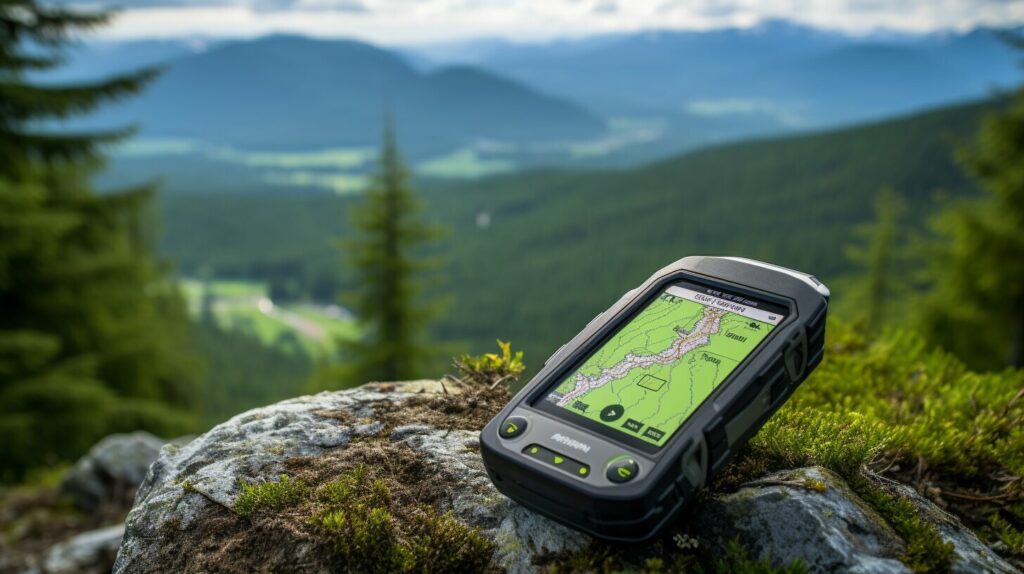
Summary
Mastering essential navigation skills is important for any outdoor enthusiast. These skills can enhance your wilderness experience, allowing you to navigate any terrain fearlessly. Here’s a summary of what we’ve covered:
Practice Makes Perfect
Regular practice is essential to enhance your navigation skills. Take day hikes with a map and compass, use GPS devices for route planning, and participate in orienteering courses. Joining navigation clubs or workshops can also help you improve your skills.
Choose the Right Navigation Tools and Equipment
Selecting the appropriate navigation tools and equipment is important for your adventures. Consider the pros and cons of different compasses, GPS devices, and smartphone apps. Remember to maintain and care for your navigation tools to ensure their reliability in the field.
Stay Safe
When navigating in the wilderness, it’s crucial to understand potential hazards and plan for emergencies. Always have backup navigation methods in case of equipment failure and navigate in low-visibility conditions with caution. Being prepared can make all the difference.
Navigate Specific Environments
The environment you’re in will impact your navigation techniques. Different terrain and landscapes require specific considerations. It’s important to understand the unique challenges of mountains, forests, deserts, and coastal areas and have the appropriate skills to navigate them.
Stay Updated
Stay informed about changes in outdoor mapping and trail systems and keep up-to-date with new navigation methods and technology. Being knowledgeable about the latest advancements can improve your outdoor experience and help you navigate with confidence.
Mastering essential navigation skills for outdoor enthusiasts is a must. By applying the tips and techniques we’ve covered, you can conquer the outdoors with confidence and embark on future wilderness adventures fearlessly.
FAQ
Q: What are essential navigation skills for outdoor enthusiasts?
A: Essential navigation skills for outdoor enthusiasts include map reading, compass navigation, and GPS navigation. These skills allow individuals to navigate through different terrains and environments confidently.
Q: How can mastering navigation skills benefit wilderness journeys?
A: Mastering navigation skills can enhance wilderness journeys by providing the ability to navigate accurately, find desired destinations, avoid getting lost, and ensure a safe and enjoyable outdoor experience.
Q: What outdoor navigation tools are commonly used?
A: Common outdoor navigation tools include maps, compasses, and GPS devices. These tools help outdoor enthusiasts determine their location, plan routes, and find their way in the wilderness.
Q: How can I improve my map reading skills?
A: You can improve your map reading skills by learning to interpret topographic maps, understanding contour lines, and identifying key features on a map. Practice using a compass in conjunction with a map for accurate navigation.
Q: What are the basics of compass navigation for hikers?
A: Compass navigation for hikers involves orienting a map using a compass, taking bearings, following a compass heading, and navigating in challenging terrain. Different types of compasses with varying features are available for outdoor navigation.
Q: How can I utilize GPS navigation for outdoor activities?
A: GPS navigation allows you to navigate using waypoints, track logs, and routes stored in a GPS device. It is important to carry backup navigation tools and batteries when relying on GPS, as technology can sometimes fail.
Q: What is orienteering and how can it improve my outdoor navigation skills?
A: Orienteering is a sport that can help improve outdoor navigation skills. It involves map interpretation, route planning, and navigating through checkpoints. Participating in orienteering events can enhance your ability to navigate accurately in the wilderness.
Q: How can I enhance my navigation skills through practice?
A: To enhance your navigation skills, practice techniques such as taking day hikes with a map and compass, using GPS devices for route planning, and participating in orienteering courses. Joining navigation clubs or workshops can also help improve your skills.
Q: What should I consider when choosing navigation tools and equipment?
A: When choosing navigation tools and equipment, consider factors such as the type of terrain you’ll be navigating, the level of accuracy required, and your personal preferences. Compare different compasses, GPS devices, and smartphone apps to find the right tools for your needs.
Q: What safety considerations are important for outdoor navigation?
A: Safety considerations for outdoor navigation include understanding potential hazards in the wilderness, planning for emergencies, and navigating in low-visibility conditions. It’s crucial to be prepared and have backup navigation methods in case of equipment failure.
Q: How can I navigate in specific outdoor environments?
A: Navigating in specific outdoor environments such as mountains, forests, deserts, and coastal areas requires understanding the unique challenges of each environment. Research and learn specific navigation techniques for these environments to navigate successfully.
Q: How can I stay updated with navigation techniques and technology?
A: Stay updated with navigation techniques and technology by reading books, articles, and online resources on outdoor navigation. Attend workshops or join navigation clubs to learn about new methods and advancements in GPS technology. Stay informed about changes in outdoor mapping and trail systems.

